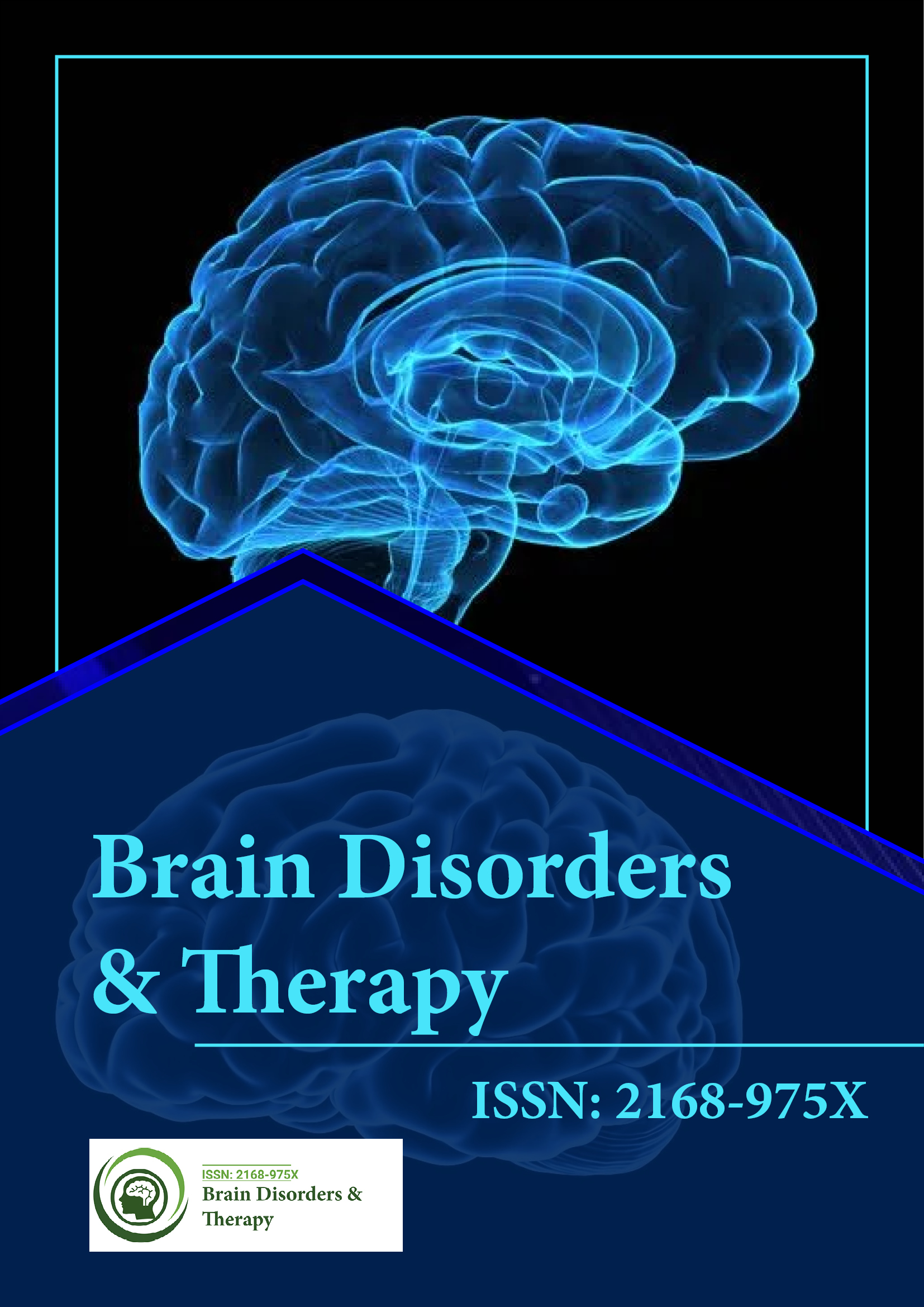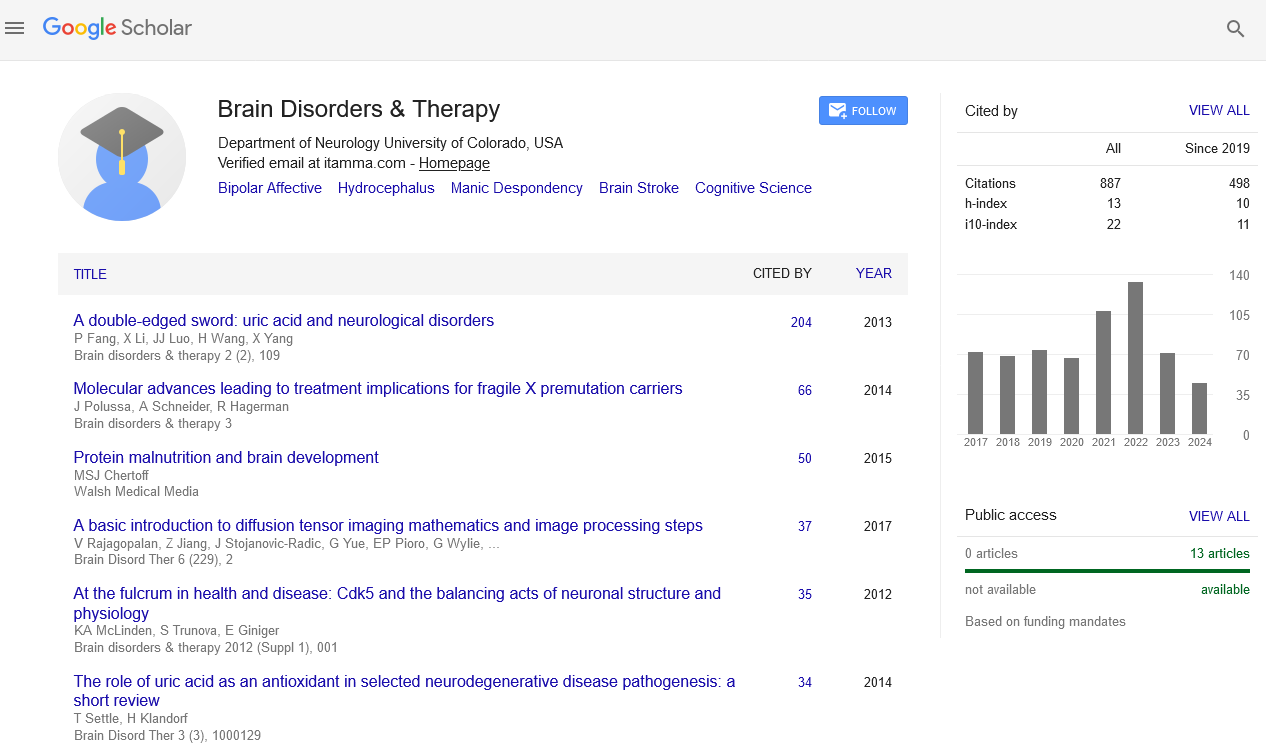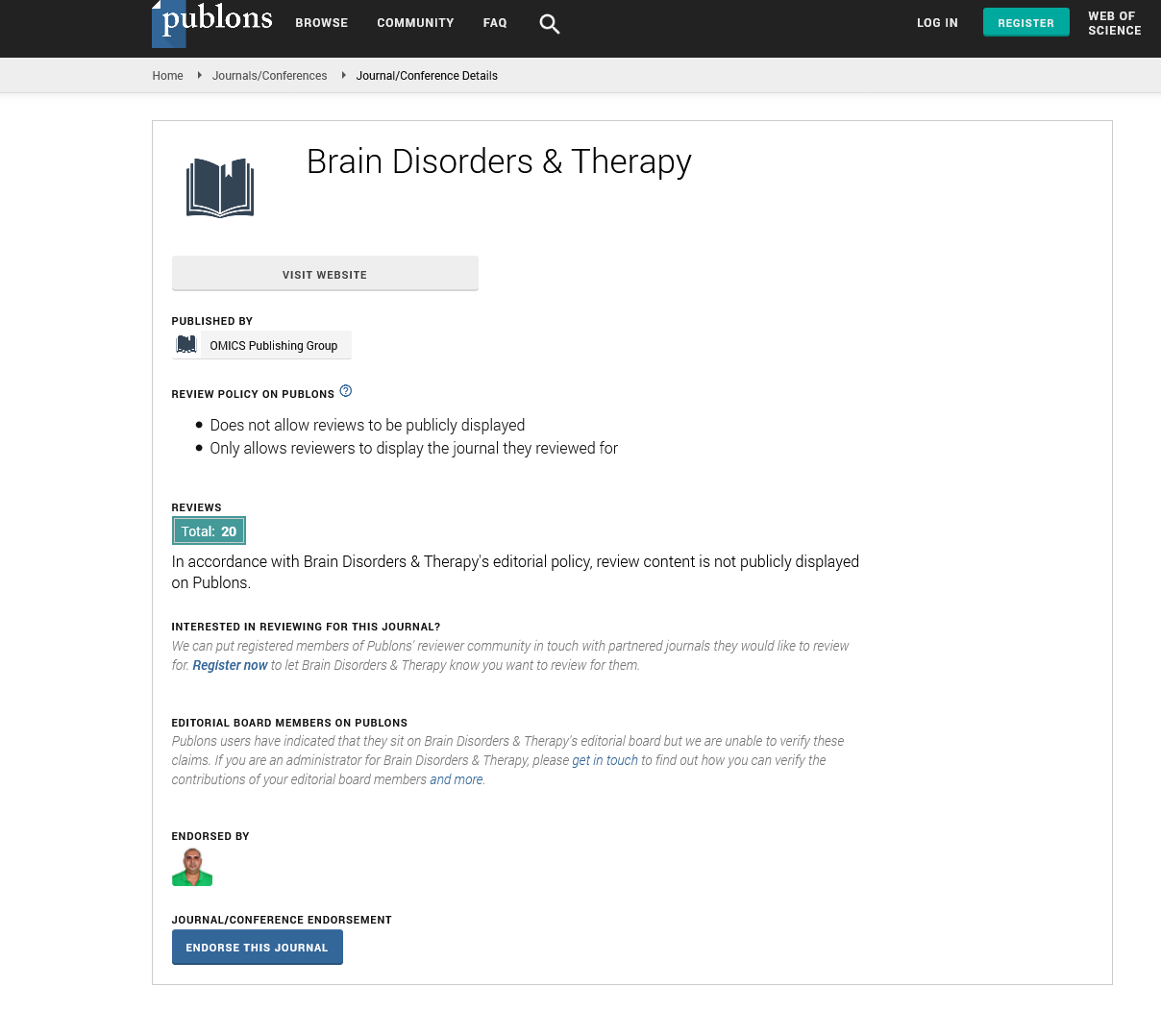Indexed In
- Open J Gate
- Genamics JournalSeek
- JournalTOCs
- RefSeek
- Hamdard University
- EBSCO A-Z
- OCLC- WorldCat
- Publons
- Geneva Foundation for Medical Education and Research
Useful Links
Share This Page
Journal Flyer

Open Access Journals
- Agri and Aquaculture
- Biochemistry
- Bioinformatics & Systems Biology
- Business & Management
- Chemistry
- Clinical Sciences
- Engineering
- Food & Nutrition
- General Science
- Genetics & Molecular Biology
- Immunology & Microbiology
- Medical Sciences
- Neuroscience & Psychology
- Nursing & Health Care
- Pharmaceutical Sciences
Tissue engineering of the central nervous system: Spinal cord injury
2nd International Conference on Brain Disorders and Therapeutics
Chicago, USA October 26-28, 2016
Farhana Akter
University of Cambridge, UK
Scientific Tracks Abstracts: Brain Disord Ther
Abstract:
Spinal cord injury (SCI) defects are complicated and there is currently no solution to completely repair spinal cord injuries. Neural tissue engineering offers hope to patients and is becoming a rapidly growing field, which aims to create engineered tissue that can replace and repair damaged tissue. Injury to the spinal cord can result in a permanent disability and is thus of significant psychological, social and economic morbidity to the patient and their relatives. As part of the endogenous repair process following acute injury, there is a migration of cells such as astrocytes, microglia and schwann cells. However, the spinal cord has limited endogenous regenerative capacity. Current treatment strategies including drug delivery and cell delivery have been investigated; however have been met with variable success. Tissue engineering is an emerging area in biomaterial research that possesses great therapeutic potential. We will be discussing the current use of scaffolds, cells and growth factors used in tissue engineering of the spinal cord.
Biography :
Akter is a surgical resident and doctoral student at The Stem Cell Institute, University Of Cambridge. His research interests include studying the pathophysiology and treatment of cervical myelopathy and spinal cord injury.
Email: farhanaakter@doctors.org.uk


